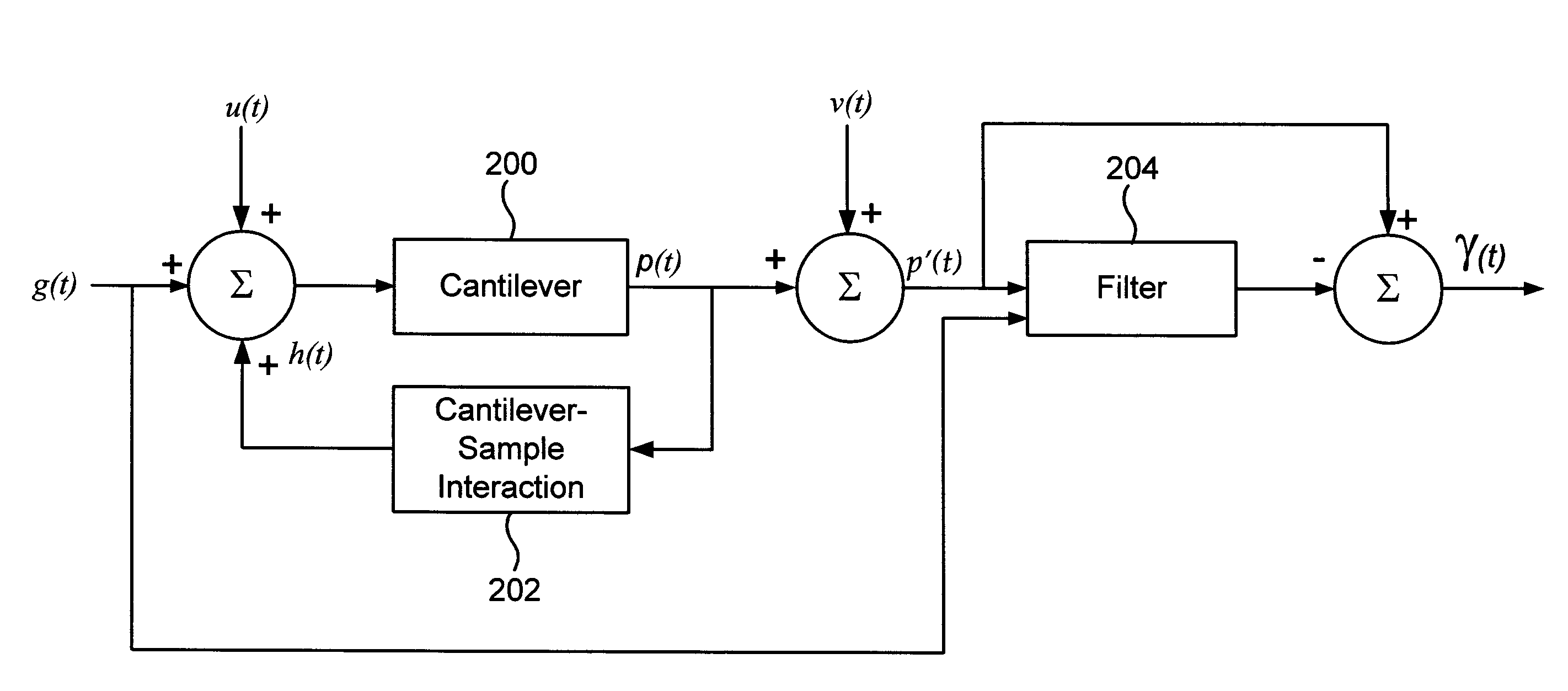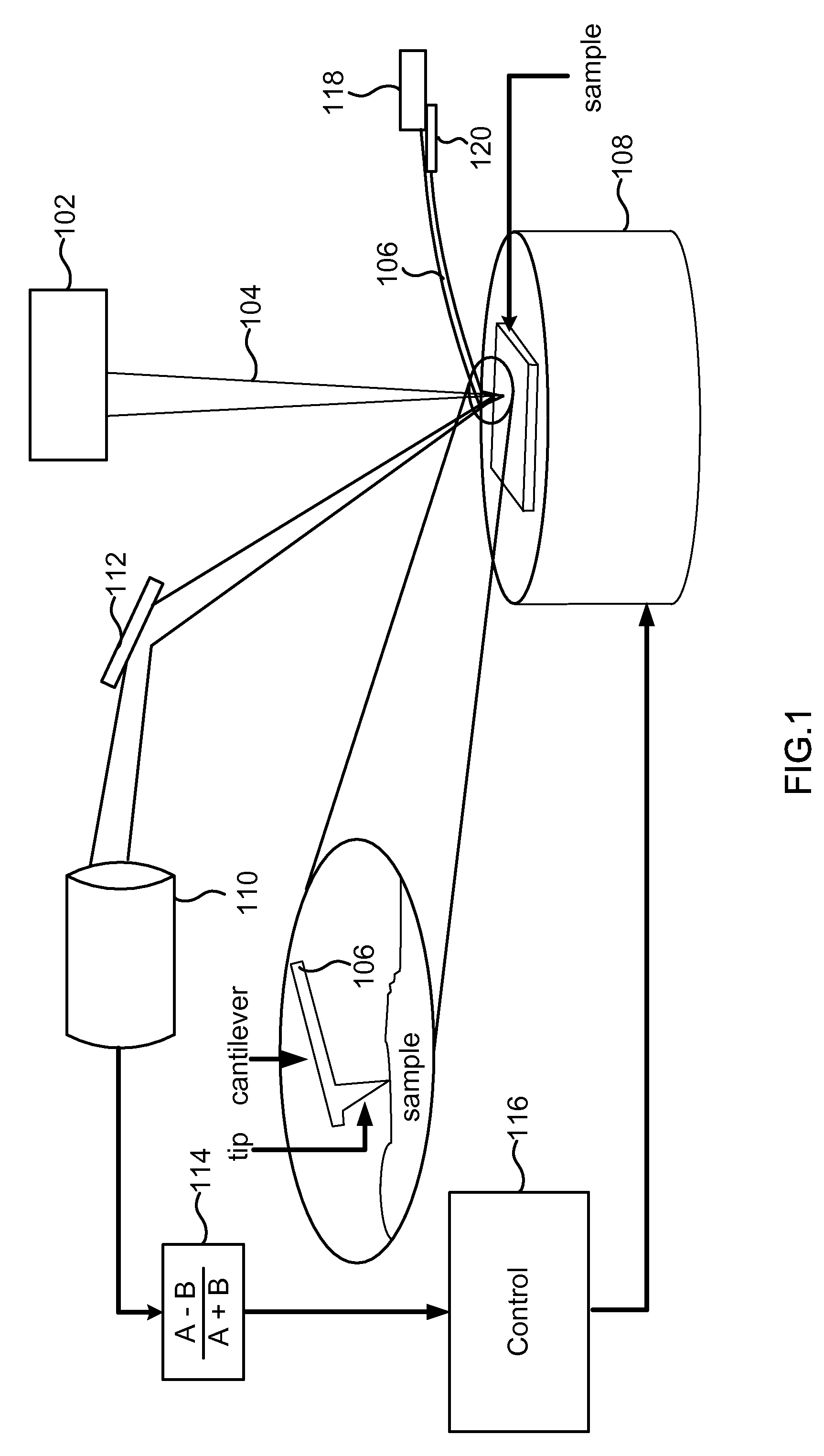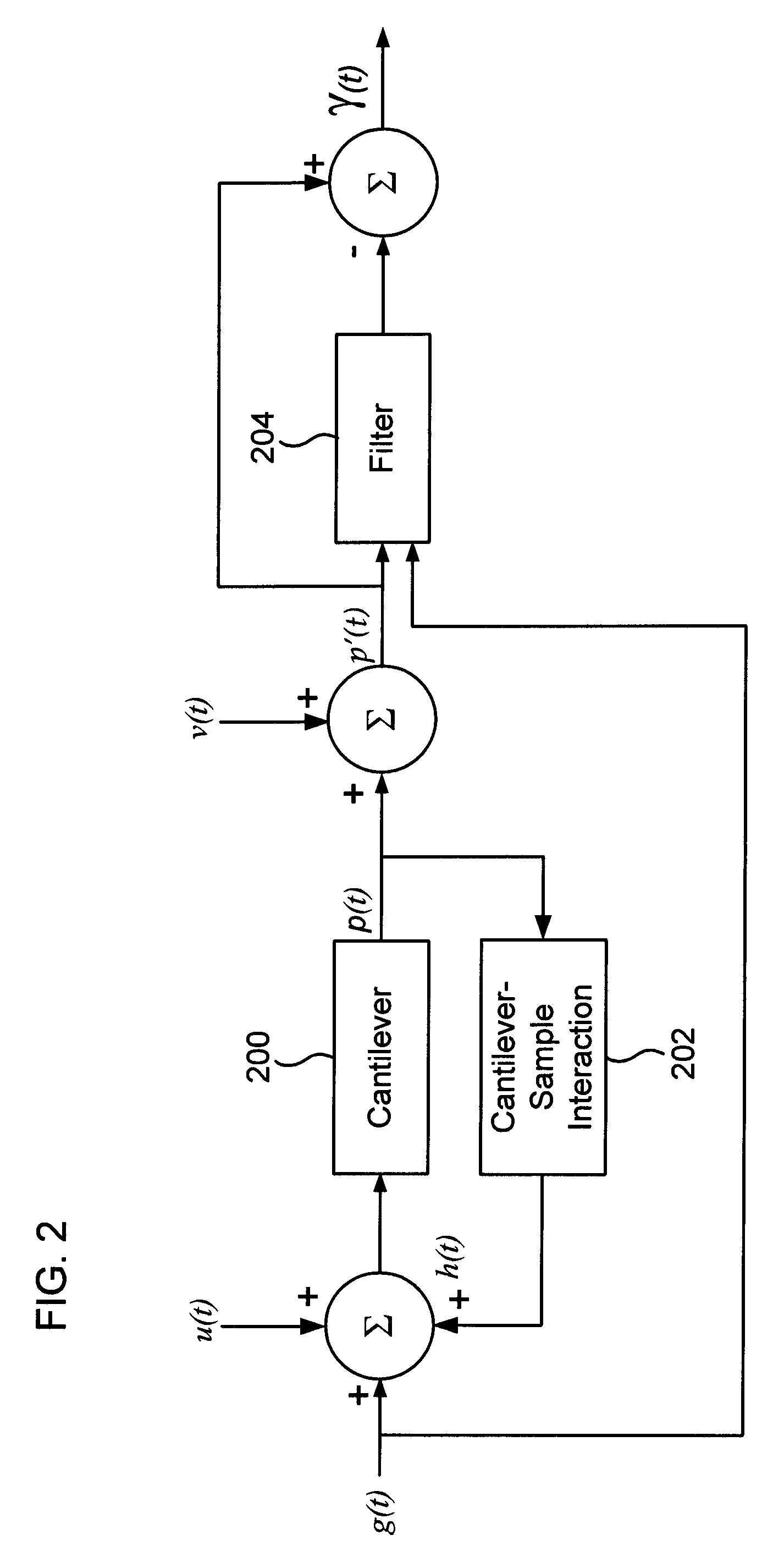Method to transiently detect sample features using cantilevers
a cantilever and feature detection technology, applied in the field of surface image measurement, can solve the problems of inherently slow present methods, insufficient high precision and bandwidth requirements of current measurement techniques, and considerable challenges, and achieve the effect of a fast and effective method of obtaining imaging
- Summary
- Abstract
- Description
- Claims
- Application Information
AI Technical Summary
Benefits of technology
Problems solved by technology
Method used
Image
Examples
Embodiment Construction
[0035]The invention provides a method to utilize the transient behavior of the cantilever oscillations for sample imaging and detection in sensing systems (i.e., systems that detect and / or image a sample). The transient based methods of the invention improve performance of interrogation speeds by approximately two orders of magnitude over steady state based methods. Fundamental limitations due to high quality factors are removed by estimating cantilever motion. A model of the cantilever is used to build an observer that is used to estimate the state of the cantilever dynamics. The cantilever-sample interaction is modeled and corresponding data during the transient state of the cantilever is analyzed using generalized likelihood ratio test to detect and probe the sample profile. The use of the transient data results in sample detection at least two orders faster than using the steady state data based methods.
[0036]Turning to the drawings, wherein like reference numerals refer to like...
PUM
 Login to View More
Login to View More Abstract
Description
Claims
Application Information
 Login to View More
Login to View More - R&D
- Intellectual Property
- Life Sciences
- Materials
- Tech Scout
- Unparalleled Data Quality
- Higher Quality Content
- 60% Fewer Hallucinations
Browse by: Latest US Patents, China's latest patents, Technical Efficacy Thesaurus, Application Domain, Technology Topic, Popular Technical Reports.
© 2025 PatSnap. All rights reserved.Legal|Privacy policy|Modern Slavery Act Transparency Statement|Sitemap|About US| Contact US: help@patsnap.com



